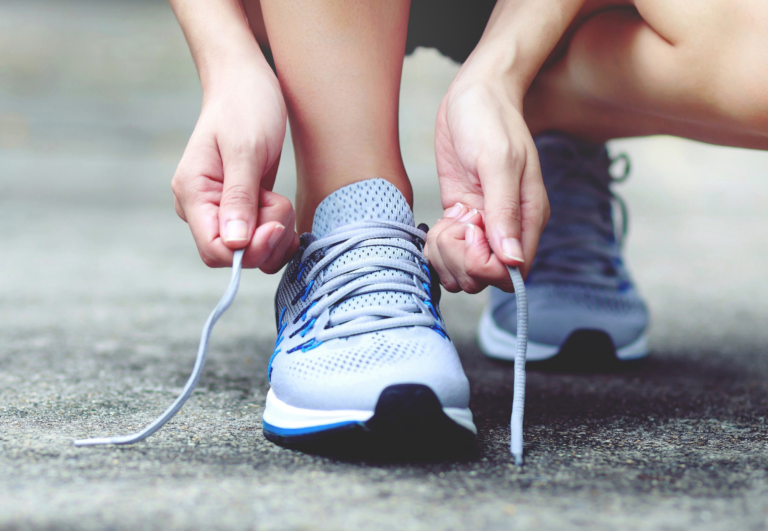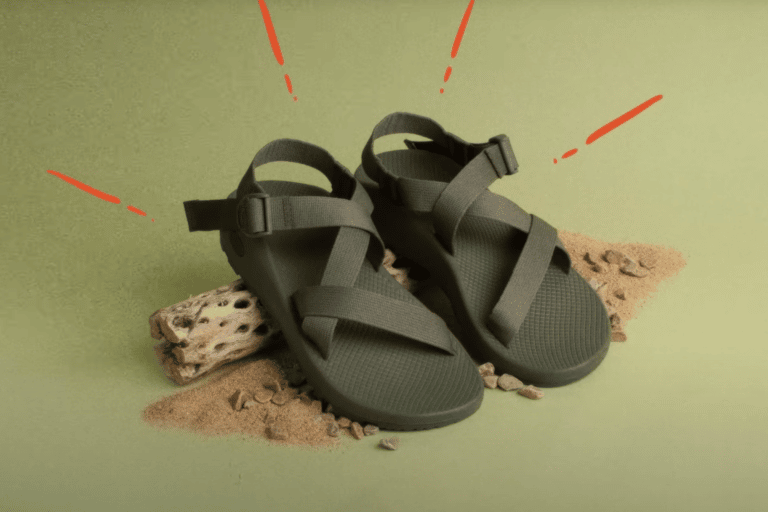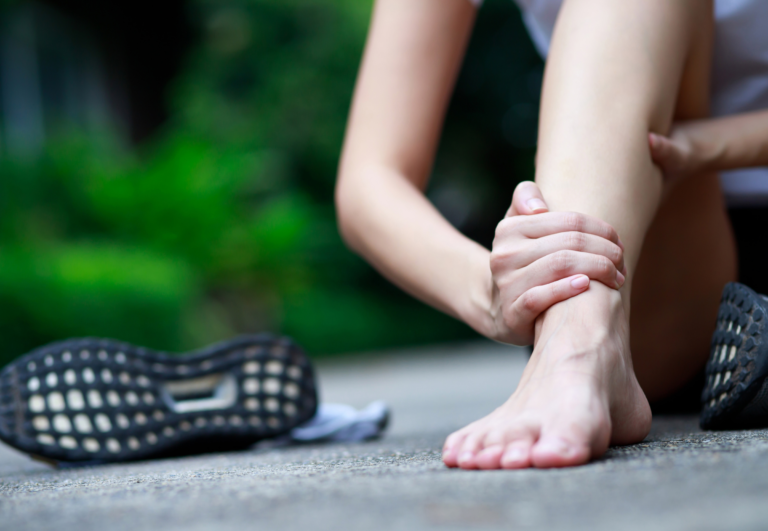How Do You Know When It’s Time to Replace Your Running Shoes: Spotting Signs of Wear
When it’s time to replace your running shoes, it’s important, especially for active runners, to look for key signs of wear and tear such as uneven tread patterns, worn-down soles, midsole compression, and creases in the material.
Pay attention to discomfort in areas like the heel, arch, or toe – these are often crucial indicators of a shoe’s deterioration. If the midsoles feel tough or offer little resistance during a twist test, or if the uppers show visible damage, it likely signifies the need for a new pair of running shoes.
Running shoes typically need replacing every 300 to 500 miles, but even with lower mileage, materials can degrade over time, affecting the shoe’s fit and support. New running shoes can significantly reduce aches, pains and discomfort. Stay alert to changes in comfort, the emergence of hot spots, or blisters, and remember that worn-out shoes can increase the risk of injury by reducing necessary shock absorption and stability.
When Is It Time To Replace Your Running Shoes? Look for Signs of Wear
Knowing when to replace your running shoes (whether they are road running shoes or trail running shoes) is crucial to prevent injuries and maintain optimum performance during your training.
Keep an eye out for these clear markers to determine if it’s time to shop for a new pair. Checking the sole, the heel and the arch of the running shoe can give you vital tips on whether they need replacing.
Tread Wear and Outsole Damage
The bottoms of your shoes can tell you a lot about their condition and durability. Look for patterns of wear on the tread bottom; uneven or smooth areas indicate it’s time for a replacement. Assess the sole of your shoe for signs of wear and tear on the treads, as this can impact your running style.
The soles should have a good grip and if you notice any part of them worn down to the foam, that’s a sure sign that they’re past their prime.
Midsole Compression and Creases
Shock absorption is vital when you’re pounding the pavement or other terrain, and your midsoles play a huge role in this.
Flexibility is normal, but if they’re compressed or you spot noticeable creases in the shape, your shoes aren’t providing the support and shock absorbency they once did. This lack of support can lead to pain and discomfort during your run.
Give them a squeeze; a firm midsole is a good midsole. Perform a twist test by holding the front and back of the shoe and twisting it; a sound shoe should offer resistance. Both the arch support and toe room can be assessed using these tests.

Upper Wear and Inner Lining Issues
Finally, inspect the top part of the shoes, the uppers, which includes the laces. Visible holes or tears are obvious signs that it’s time for a change. Make sure the inner lining isn’t worn out. This is a critical part of the shoe that is often overlooked but has a significant impact on the running shoe’s overall durability.
This area endures a lot of friction, and significant wear could compromise comfort and fit, which can lead to potential blistering or irritation during runs. Inspecting your shoes for signs of wear and tear can help alleviate unnecessary aches and pains and ultimately lead to a more enjoyable run.
What is the Typical Lifespan of Running Shoes? (Mileage & Time)
As a runner, whether you’re a distance runner or a beginner, knowing when to replace your running shoes is crucial for your comfort and to prevent injury. Understanding your running style and how it impacts the wear of your shoes can provide useful tips on maintaining your running shoes’ quality.
Your shoes have a lifespan measured in miles and time, so let’s explore how to use these indicators to maintain the health of your feet and your performance.

Mileage as an Indicator
The distance your running shoes can cover before needing replacement typically falls between 300 and 500 miles.
Here’s a handy breakdown based on your running habits:
- Beginner: If you run less frequently, say up to 10 miles per week, your shoes could last a year or more.
- Regular Runner: At 20 miles a week, anticipate a new pair every 3 to 6 months.
- Distance Runner: Those putting in 40+ miles weekly may need to replace shoes as often as every 2 to 3 months.
Remember to pay attention to signs of wear such as flattened soles or less cushioning, which can indicate it’s time for a new pair.
Time-Based Replacement Recommendations
While mileage is a strong indicator of shoe life, time also plays a role, especially if you vary your weekly running routine or take breaks:
| Weekly Mileage | Replacement Estimate |
|---|---|
| Up to 15 miles | Every 5 to 8 months |
| 20+ miles | Every 4 to 6 months |
| 40+ miles | Every 2 to 3 months |
Even with lower mileage, the materials in your running shoes can degrade over time due to exposure to the environment and repeated stress.
How Does Size and Fit Change in Old Running Shoes?

As running shoes age, the fit can alter, often leading to reduced comfort and support. It’s crucial for you to be aware of these factors to maintain both your running performance and foot health.
Comfort and Cushioning Loss
When your shoes begin to age, you’ll notice a decrease in cushioning, which can considerably reduce their comfort level.
The midsole, which provides shock absorption, typically wears out before the upper part of the shoe does. This loss of cushioning can lead to a harder impact during your runs, making the experience less comfortable.
Changes in Support and Stability
The support of your running shoes is vital for a stable stride, and as shoes wear, their structural integrity declines. You might feel a difference in how your shoes wrap around your feet, with the fit becoming looser as the materials stretch.
Stability in aged shoes often diminishes, which may negatively affect your gait and potentially lead to a higher chance of injury risks and other problems if not addressed promptly.
Identifying Hot Spots and Blisters
Old running shoes may cause movement, pressure, or friction in unexpected places, leading to hot spots and blisters. Pay attention to any new areas of irritation, which indicate that the interior of the shoe is degrading.
If there’s unusual rubbing against your feet that wasn’t there before, it’s a sign that the shoe is losing its original fit and it may be time for a new pair.
Potential Injury Risks with Worn Out Running Shoes

Regularly inspecting your running shoes for signs of wear is not just about maintaining comfort; it’s critical for preventing injuries. Running with shoes that have lost their cushioning and support can lead to a range of problems that affect your joints and overall musculoskeletal health.
Around 78% of runners experience some form of foot discomfort when their shoes are worn out. Meanwhile, expert studies show that running in shoes that are past their lifespan can increase the risk of injury by up to 43%.
Risks of Wearing Old Shoes
When your running shoes begin to break down, they no longer provide the necessary support to absorb the shock and stress of each stride. This can lead to:
- Increased stress on your knees and hips: According to a study, using running shoes beyond their recommended lifespan decreases shock absorption by more than 50%, significantly impacting joint health.
- Risk of shin splints: Worn shoes can contribute to this painful condition characterized by inflammation along the inner edge of the shinbone.
- Enhanced likelihood of ankle injuries: As the stability of the shoe deteriorates, your ankles may become more vulnerable to twisting and turning in unnatural ways.
Effects on Joints and Musculature
Continuing to run in old shoes can also have a cascade effect on your body’s musculature.
- Muscle fatigue: Your muscles have to work harder to compensate for the lack of support and cushioning, leading to premature fatigue.
- Running injuries: The risks of common running injuries like runner’s knee, where the kneecap gets irritated, or plantar fasciitis, inflammation of the band running beneath your foot, increase with inadequate footwear as your body weight puts more stress on the joints.
Remember, your shoes are the foundation of your running form. Keeping them in good condition helps protect your body from the harsh impacts of running.






